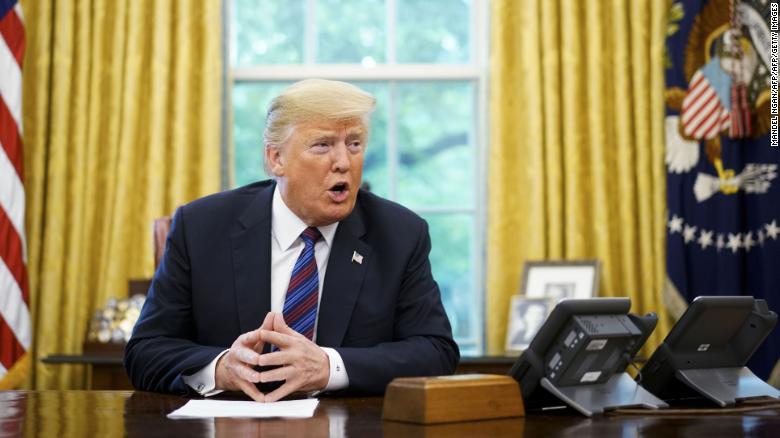
Washington – To hear President Donald Trump tell it on Monday, the United States is abandoning the NAFTA free trade deal between the US, Canada and Mexico in favor of a bilateral agreement between the US and Mexico. And possibly a second bilateral deal with Canada.
Trump even gave the bilateral agreement a name: the “US-Mexico Trade Agreement,” which he said would replace the trilateral free trade deal.
But none of that is happening.
There is no formal free trade deal between the US and Mexico, only an agreement between the two countries on how to resolve key issues in their trade relationship as part of the NAFTA talks. The US trade representative’s office officially described the agreement as “a preliminary agreement in principle … to update the 24-year-old NAFTA with modern provisions representing a 21st century.”
Made for TV moment
The “US-Mexico Trade Agreement” does not exist — and likely never will.
“We hope that Canada can join in now and we expect them to begin that process very soon,” the US Trade Representative Robert Lighthizer said on a call with reporters after Trump’s announcement. A senior White House official added that Canada would be brought in to the trade discussions on Monday afternoon.
None of that stopped Trump from giving the impression on Monday morning that he was “terminating” NAFTA “and going into this deal” with Mexico. He even added later in the day that he had “just signed a trade agreement with Mexico,” which cannot happen without the US first nixing NAFTA.
The agreement between the US and Mexico on Monday was a significant marker in the yearlong effort to renegotiate the trilateral trade pact, sweeping away key obstacles impacting the US and Mexico that had held up trilateral talks.
But Trump was eager to portray the agreement as much more than that as the reality TV star-turned-president orchestrated the latest made-for-TV moment of his presidency.
“It’s a big day for trade, big day for our country. A lot of people thought we’d never get here, because we all negotiate tough,” Trump said as he walked into the Oval Office and took his seat behind the Resolute Desk. “And this is a tremendous thing. This has to do — they used to call it NAFTA. We’re going to call it the United States-Mexico Trade Agreement, and we’ll get rid of the name NAFTA.”
Trilateral agreement or bust?
Trump has repeatedly indicated he would prefer to reach bilateral agreements with Canada and Mexico, but the two countries have maintained a united front that a trilateral agreement is the only one they will sign. There was no indication on Monday that Mexico had abandoned that position.
Instead, the Mexican President Enrique Peña-Nieto, who joined Trump in the Oval Office by speakerphone, emphasized three times the importance of Canada joining the burgeoning agreement.
“I desire, I wish that the part with Canada will be materializing in a very concrete fashion, and we can have an agreement the way we proposed it from the initiation of this renegotiating process, a tripartite,” Peña-Nieto said through a translator.
Senior administration officials also made clear on a call with reporters Monday afternoon that they were still pursuing a revised NAFTA trade agreement, though they maintained the possibility of a bilateral deal between the US and Mexico if a trilateral deal with Canada cannot be reached.
A senior administration official indicated the White House plans to submit a letter to Congress on Friday notifying the legislature of the President’s plans to sign a new trade deal, with or without Canada’s agreement.
“What we will do is ideally Canada will be in and we’ll be able to notify that. If Canada is not in then we’ll notify that we have an agreement with Mexico and we are open to Canada joining it,” the official said.
But pressed as to whether Mexico is willing to enter a bilateral deal with the US, a senior White House official on the same call dodged.
“I think we’re at a position where we’re going to have discussions with Canada this week and see where we get to,” the official said, referring reporters to Mexico to describe their position.
Some experts interpreted the administration’s signaling about a possible bilateral deal as an attempt to pressure Canada into a swift agreement on revising NAFTA, which the US administration denied.
“This wasn’t designed to put pressure on anybody,” a senior administration official said, before later adding that the US planned to submit its NAFTA renegotiation plans to Congress by the end of the week with or without Canada’s agreement.
As reported by CNN
